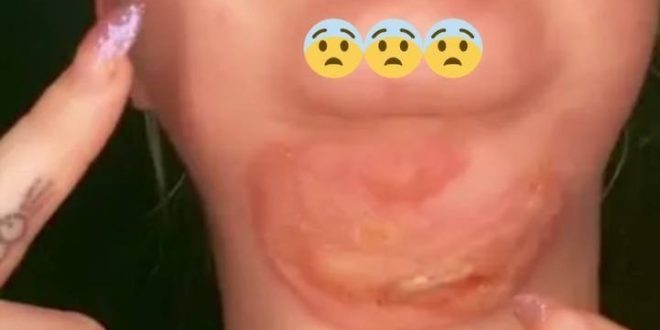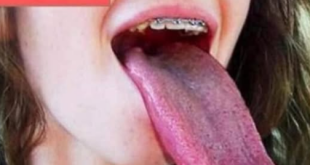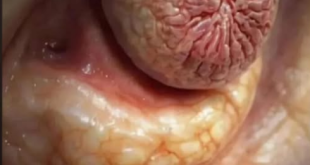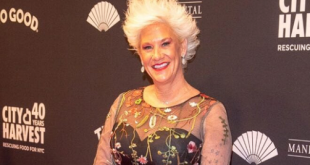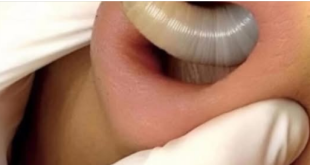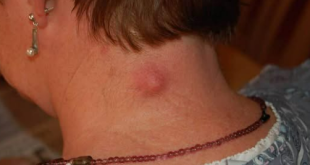Victoria Quezada, from Sacramento, California, took to TikTok to share her traumatic experience.
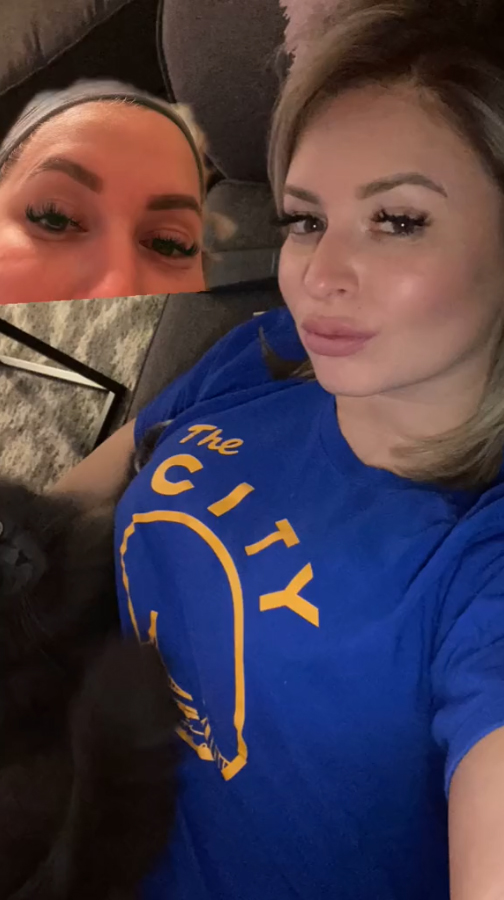
She explained that she decided to try the non-invasive beauty therapy – CoolSculpting.
CoolSculpting is a treatment known as cryolipolysis, which freezes fat cells in the targeted area and kills them.
Supposedly the treatment can get rid of up to 20-25% of stubborn fat.
Sounds harmless enough, right?

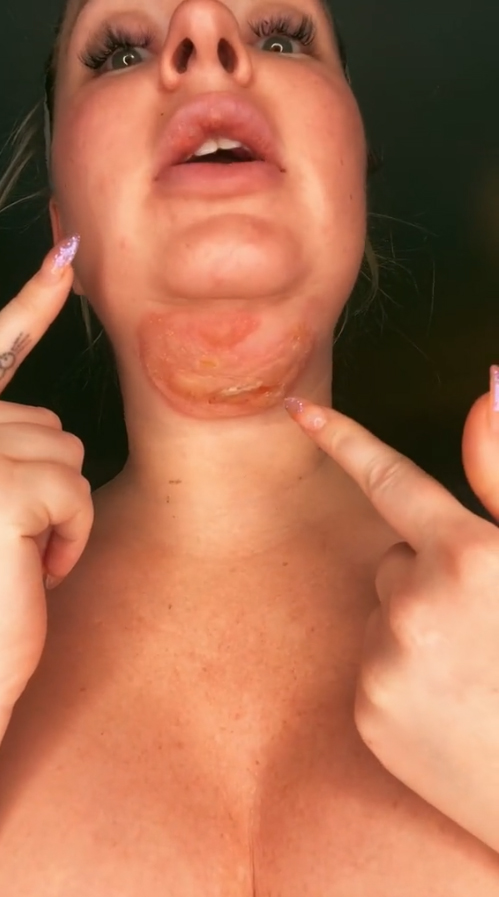
Victoria uses her video to serve as a warning for others, claiming that after having the treatment back in April, she is now scarred for life.
She is currently considering legal action against the clinic, which she has not named.
Victoria starts the video with a picture of her two weeks before the therapy, saying that she never really had a defined jawline, but sort out this treatment because it was just help define her jaw’s natural shape.
She says: “Fast forward a week and two ER visits later… here we are.”
Victoria gives viewers a warning before she reveals her burns, that it is very graphic.
She says: “My voice is even gone because my throat has swelled so much it’s affected my vocal chords.”
She alleges the CoolSculpting left her with blisters and burn underneath her chin, saying that she doesn’t even have a defined jawline and has been left with an overall swollen faced.

The video has garnered over 1.1million views and racked up over 143,000 likes.
People shared their horror at Victoria’s results, with many saying she should pursue legal action against the clinic that did her treatment for malpractice.
One woman, who identified herself as an esthetician, said: “As an esthetician I can legitimately tell you this was done incorrectly. I have NEVER seen this. Please contact legal representation immediately.”
Another said: “COOLSCUPLTING specialist here. I’m so sorry love. My guess is they forgot the liner and the gel trap which means your skin was not protected.”
Victoria pleads with people to help her, as she says that it’s really hard for her to look at herself.
5 common elderly health issues
1. Chronic health conditions
According to the National Council on Aging, about 92 percent of seniors have at least one chronic disease and 77 percent have at least two. Heart disease, stroke, cancer, and diabetes are among the most common and costly chronic health conditions causing two-thirds of deaths each year. The National Center for Chronic Disease Prevention and Health Promotion recommends meeting with a physician for an annual checkup, maintaining a healthy diet and keeping an exercise routine to help manage or prevent chronic diseases. Obesity is a growing problem among older adults and engaging in these lifestyle behaviors can help reduce obesity and associated chronic conditions.
2. Cognitive health
Cognitive health is focused on a person’s ability to think, learn and remember. The most common cognitive health issue facing the elderly is dementia, the loss of those cognitive functions. Approximately 47.5 million people worldwide have dementia—a number that is predicted to nearly triple in size by 2050. The most common form of dementia is Alzheimer’s disease with as many as five million people over the age of 65 suffering from the disease in the United States. According to the National Institute on Aging, other chronic health conditions and diseases increase the risk of developing dementia, such as substance abuse, diabetes, hypertension, depression, HIV and smoking. While there are no cures for dementia, physicians can prescribe a treatment plan and medications to manage the disease.
3. Mental health
According to the World Health Organization, over 15 percent of adults over the age of 60 suffer from a mental disorder. A common mental disorder among seniors is depression, occurring in seven percent of the elderly population. Unfortunately, this mental disorder is often underdiagnosed and undertreated. Older adults account for over 18 percent of suicides deaths in the United States. Because depression can be a side effect of chronic health conditions, managing those conditions help. Additionally, promoting a lifestyle of healthy living such as betterment of living conditions and social support from family, friends or support groups can help treat depression.
4. Physical injury
Every 15 seconds, an older adult is admitted to the emergency room for a fall. A senior dies from falling every 29 minutes, making it the leading cause of injury among the elderly. Because aging causes bones to shrink and muscle to lose strength and flexibility, seniors are more susceptible to losing their balance, bruising and fracturing a bone. Two diseases that contribute to frailty are osteoporosis and osteoarthritis. However, falls are not inevitable. In many cases, they can be prevented through education, increased physical activity and practical modifications within the home.
5. Malnutrition
Malnutrition in older adults over the age of 65 is often underdiagnosed and can lead to other elderly health issues, such as a weakened immune system and muscle weakness. The causes of malnutrition can stem from other health problems (seniors suffering from dementia may forget to eat), depression, alcoholism, dietary restrictions, reduced social contact and limited income. Committing to small changes in diet, such as increasing consumption of fruits and vegetables and decreasing consumption of saturated fat and salt, can help nutrition issues in the elderly. There are food services available to older adults who cannot afford food or have difficulty preparing meals.
